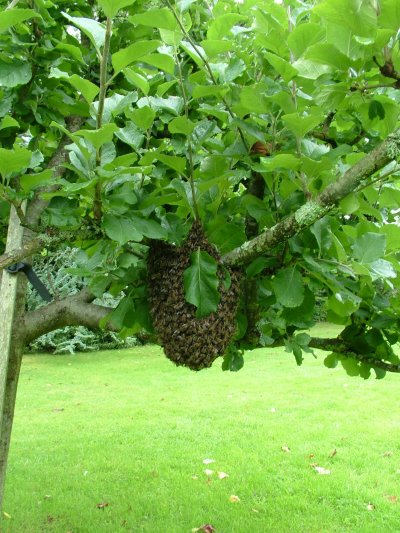
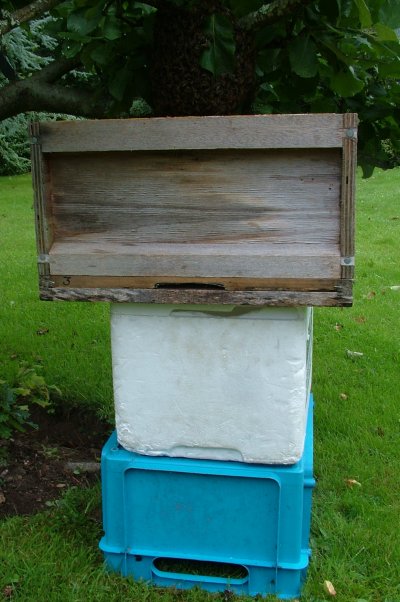
Use of a bee vacuum when taking a swarm (20 August 2009)
This swarm was taken at the request of the landowner who was paying for the service, therefore the time on site and travel had to be minimised. There was a steady drizzle during the process which meant that most of the flying bees were 'at home'. After hiving the swarm a bee vacuum was used to mop up the flying bees.


Above left: Swarm in apple tree about 1 metre off ground. Above right: National hive box with combs placed below swarm.
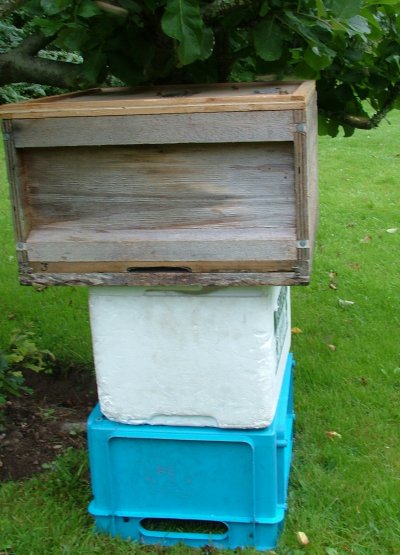
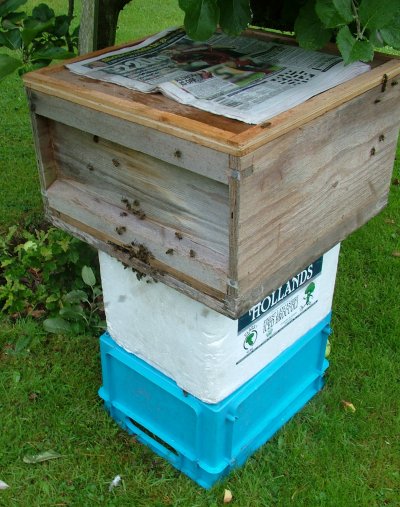
Above left: Bees knocked off branch into hive, crown board placed on the top.
Above right: Residual bees not knocked down take to the air, locate the queen and enter
the hive.
After 30 minutes the hive entrance is closed and residual bees are taken into a bee vacuum.
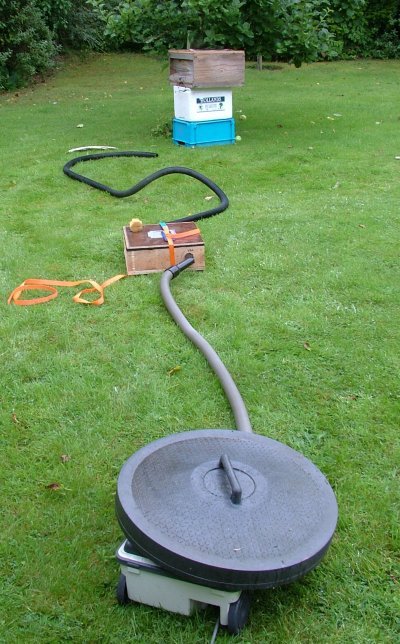
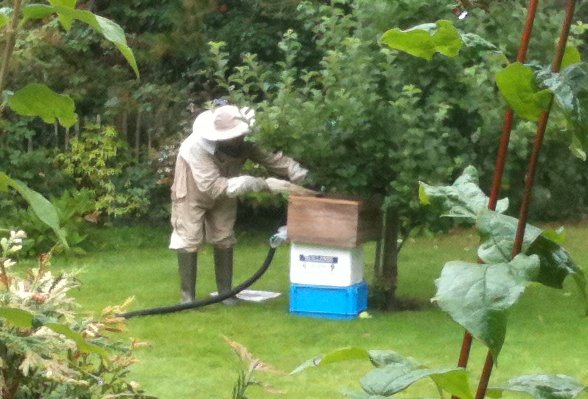
Above (left): Bee vacuum prepared
Above (right): Vacuuming bees with the help of a goose wing
The domestic vacuum cleaner draws air through the box in the middle distance. There is mesh over the exit from the box to the vacuum cleaner. The box is provided with closable vents which are opened as soon as the bees are collected. The vacuum box is designed to take a Warré hive box between its lid and body for if the swarm is destined for a Warré hive.
The bee vacuum is illustrated in detail at http://www.dheaf.plus.com/warrebeekeeping/vacuum.htm
Time on site: 1 hour.